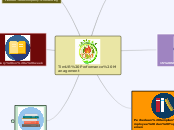jonka Payton Clark 3 vuotta sitten
114
The doctrine is represented by the string which holds the kite to the spool. The string is a solid foundation and will not change. It will always hold the kite to the spool. The actual kite represents the principles that you want to be implemented in the
The text introduces a metaphorical framework where doctrine is likened to a string that connects a kite to a spool, representing a foundational, unchanging element. The kite itself symbolizes the principles intended to be taught and understood by students, while the spool signifies the practical application of these principles.









